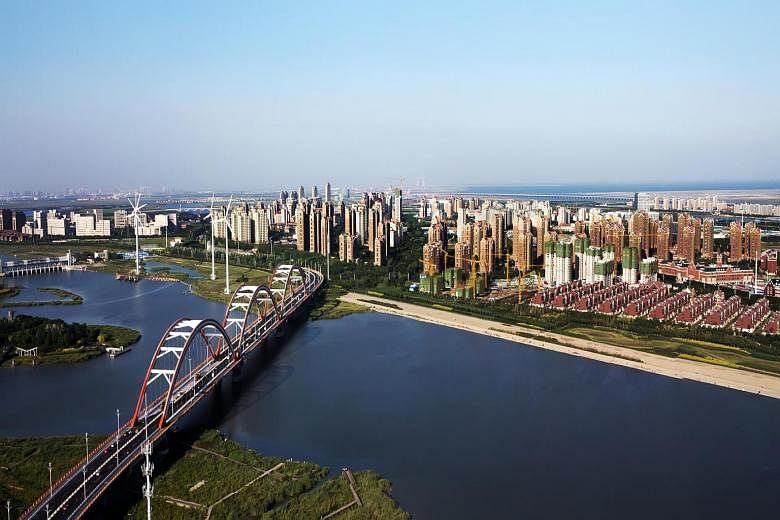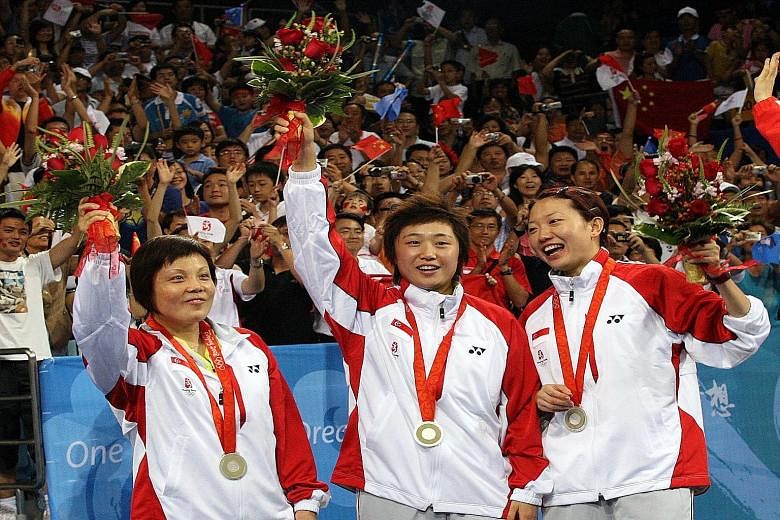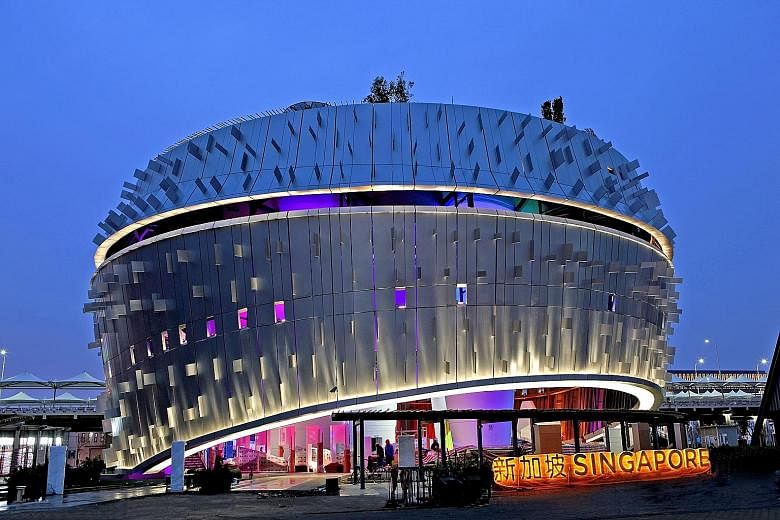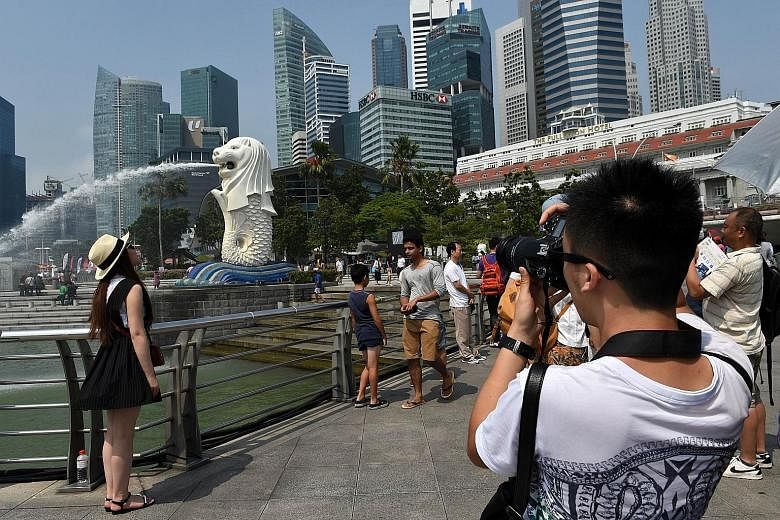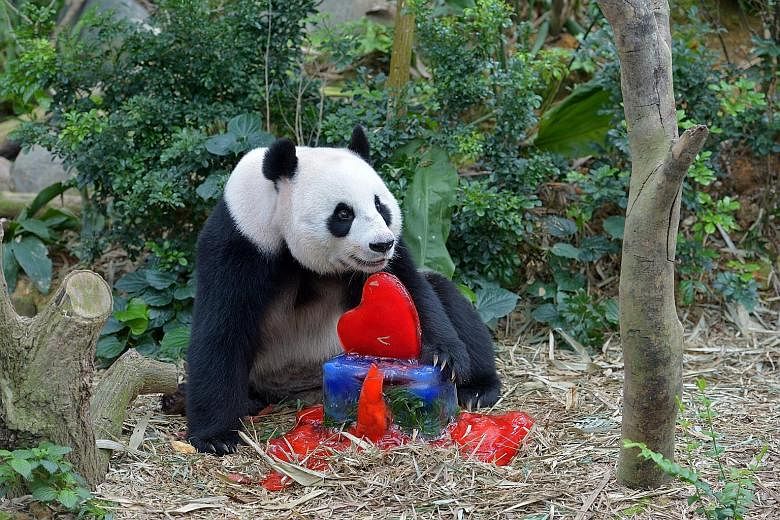Singapore and China mark 25 years of close diplomatic relations this year. The Straits Times China Correspondent Esther Teo traces the significant milestones in the bilateral relationship.
May 1976: Mr Lee Kuan Yew makes his maiden visit to China as Prime Minister. He meets Chinese leader Mao Zedong and Premier Hua Guofeng.
November 1978: Chinese paramount leader Deng Xiaoping makes his first and only official visit to Singapore - the last stop of his three-nation tour of South-east Asia that includes Thailand and Malaysia.
At a Communist Party gathering held the following month, Mr Deng gives his backing to reforms that lead to 30 years of rapid economic growth for the country.
Dec 29, 1979: Singapore's Finance Minister Hon Sui Sen and Mr Deng sign a trade agreement to set up respective trade representative offices in 1981 to strengthen economic links between the two countries.
May 15, 1985: Commercial air services between China and Singapore commence. All seats on the first two Singapore Airlines flights to Beijing via Shanghai in the week are taken up. Oct 3, 1990: China and Singapore officially establish diplomatic ties. Thereafter, both countries proceed to upgrade their trade representative offices into embassies.
December 1990: China's first ambassador to Singapore, Mr Zhang Qing, assumes his post.
July 1991: Singapore's first ambassador to China, Mr Cheng Tong Fatt, assumes his post.
Jan 7 to 10, 1992: Chinese President Yang Shangkun makes a four-day state visit to Singapore, the first by a Chinese head of state.
January to February 1992: Mr Deng makes his famous Southern Tour of China's coastal provinces to push economic reforms further. His favourable impressions of Singapore lead him to hail the Republic as a model of development for China to emulate.
April 27, 1993: Singapore plays a key role as a facilitator of cross- strait ties. It is the venue of the first high-level meeting between the two sides, with Mr Wang Daohan, the head of China's semi-official Association for Relations Across the Taiwan Straits, holding talks with his Taiwanese counterpart Koo Chen-fu of the Straits Exchange Foundation.
Feb 26, 1994: Senior Minister Lee Kuan Yew and Chinese Vice-Premier Li Lanqing sign an agreement in Beijing for the joint development of the Suzhou Industrial Park, the first government-level flagship project.
Jan 1, 2001: Singapore's majority stake and management control over the Suzhou Industrial Park are officially transferred to the Chinese side to incentivise the local government to support the project. Singapore's share in the venture is reduced to 35 per cent from 65 per cent.
May 14, 2004: The first Joint Council for Bilateral Cooperation (JCBC) meeting kicks off in China, with Deputy Prime Minister Lee Hsien Loong and Vice-Premier Wu Yi as co-chairs. The JCBC remains the highest-level mechanism for bilateral cooperation.
Nov 18, 2007: Prime Minister Lee Hsien Loong and Premier Wen Jiabao sign a framework agreement for Singapore and China to jointly develop the Sino-Singapore Tianjin Eco-City. This is the second government-to-government-level project.
Aug 17, 2008: Singapore's women's table tennis team comprising Li Jiawei, Feng Tianwei and Yang Yuegu ends the Republic's 48-year Olympic medal drought, winning a silver at the Beijing Olympics. Singapore's second Olympic medal comes after weightlifter Tan Howe Liang's Olympic medal, also a silver, at the 1960 Olympics in Rome.
Oct 23, 2008: China and Singapore sign their free trade agreement (FTA) after eight rounds of negotiations over two years. It is the first comprehensive bilateral FTA that China has inked with another Asian country.
May 2010: The first Chinese-language programme offered by the Lee Kuan Yew School of Public Policy commences. Targeted at senior Chinese government officials and business leaders, the 10-month Master in Public Administration and Management programme starts with its first batch of 57 students.
May to October 2010: Singapore builds a 3,000 sq m music box-like structure with the theme "Urban Symphony" at the Shanghai World Expo. This is the Republic's largest pavilion in its 10-year history of participating in the World Expo. Some 190 countries participate in the six-month-long Shanghai expo.
June 30, 2010: The ground-breaking ceremony kicks off for the Sino-Singapore Guangzhou Knowledge City, which is meant for high-value industries and creative talent.
The project, which has Temasek unit SingBridge in a 50-50 joint venture with the Guangzhou provincial government, marks the dawn of the new "private sector- driven, government-supported" model.
Sept 9, 2010: The ground-breaking ceremony begins for the first project in the Sino-Singapore Jilin Food Zone, another private sector- led project. The project in north- eastern Jilin province aims to diversify food sources for Singaporeans.
Sept 6, 2012: Pandas Kai Kai and Jia Jia arrive in Singapore on a 10-year loan. China's President Hu Jintao announced in November 2009 that they would be given to the Republic to mark 20 years of close diplomatic ties in 2010.
January 2014: Singapore earns the title of China's largest foreign investor for the first time with US$7.3 billion (S$10.3 billion) worth of investments in 2013, official data shows.
July 28, 2014: Singapore and China announce that they are exploring the possibility of a third government-to-government project after the Suzhou Industrial Park and the Tianjin Eco-City.
June 1, 2015: Singapore extends the validity of visas issued to Chinese nationals to a maximum of 10 years. This makes it more convenient for Chinese tourists to visit Singapore.
Nov 6 to 7, 2015: Chinese President Xi Jinping visits Singapore to mark 25 years of diplomatic relations, his first to the Republic since he became China's leader in November 2012. The third government-to- government project is expected to be announced during his visit.
